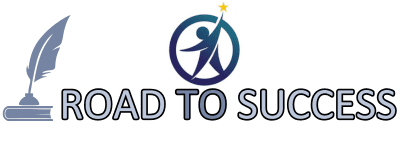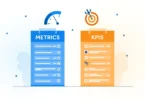Change is inevitable in any organization. Whether it’s adopting new technology, restructuring teams, or shifting business models, change can either be a stepping stone to success or a source of disruption. The key to making transitions smooth and effective lies in a well-crafted Change Management Strategy.
A strong change management approach helps organizations minimize resistance, engage employees, and ensure that new processes are adopted successfully. Without a structured plan, even the best initiatives can fail due to uncertainty, lack of communication, or resistance to change.
In this guide, we’ll explore best practices for implementing a seamless Change Management Strategy, common challenges organizations face, and how to measure the impact of change. Whether you’re leading a company-wide transformation or refining internal processes, the right strategy ensures that change is not just managed—but embraced.
Headlines
Understanding the Change Management Process
Best Practices for a Successful Change Management Strategy
- Leveraging Change Management Frameworks
- Employee Engagement and Stakeholder Involvement
- Effective Strategies for Employee Engagement in Change Management
Ensuring Long-Term Success in Organizational Change
- Measuring the Impact of Change Management
- Continuous Improvement and Agile Change Management
- Key Components of Agile Change Management
Understanding the Change Management Process
Key Stages of Change Implementation
A well-structured Change Management Strategy follows a step-by-step process to ensure smooth transitions. Two of the most widely used models for understanding these stages are Lewin’s Change Model and McKinsey’s 7S Framework. Each provides a structured approach to managing change effectively.
Lewin’s Change Model: A Simple Yet Powerful Framework
Developed by Kurt Lewin, this model breaks down change into three fundamental stages:
1️⃣ Unfreeze: Preparing for Change
- Organizations must first identify the need for change and assess existing processes.
- This stage often involves gathering data, addressing employee concerns, and breaking down resistance to change.
- Key Actions:
- Conduct change readiness assessments to measure the impact.
- Communicate why the change is necessary to employees and stakeholders.
- Identify potential barriers and strategize how to overcome them.
2️⃣ Change: Implementing the Transition
- Once the foundation is set, the actual change process begins.
- This phase requires effective leadership, strong communication, and employee engagement to ensure alignment.
- Key Actions:
- Train employees to adapt to new processes, tools, or technologies.
- Provide continuous support and encourage feedback.
- Assign change agents or ambassadors to promote a positive mindset.
3️⃣ Refreeze: Stabilizing and Reinforcing the Change
- The final stage is about making the change permanent and sustainable.
- Without reinforcement, employees may revert to old habits, jeopardizing transformation efforts.
- Key Actions:
- Establish new policies, procedures, and performance metrics to support the change.
- Recognize and reward employees who have successfully adapted.
- Conduct regular evaluations to ensure long-term effectiveness.
McKinsey 7S Framework: Aligning Organizational Elements for Change
The McKinsey 7S Model takes a more holistic approach by ensuring all key elements of an organization align with the change. The 7 interconnected factors include:
Strategy – The overall vision and objectives behind the change.
Structure – How teams, departments, and hierarchies must adapt.
Systems – The tools, processes, and workflows impacted by the change.
Shared Values – The core beliefs and culture that guide employees.
Style – The leadership approach to driving and supporting change.
Staff – Ensuring employees have the right skills and training.
Skills – Developing competencies necessary for long-term success.
💡 Why Use the McKinsey 7S Model?
- Helps organizations avoid siloed thinking by considering all aspects of change.
- Ensures a balanced transformation by aligning people, processes, and strategy.
- Provides a clear roadmap for smooth execution and continuous improvement.
Final Thoughts on Change Implementation
A well-executed Change Management Strategy requires a combination of structured frameworks, strong leadership, and active employee involvement.
Lewin’s Change Model offers a simplified step-by-step approach, while the McKinsey 7S Model ensures a comprehensive organizational alignment.
Successful implementation depends on clear communication, overcoming resistance, and continuous reinforcement.
Common Challenges in Change Adoption
Adopting change within an organization is rarely a smooth process. Even with a well-defined Change Management Strategy, many challenges can arise that threaten the success of the transition. Understanding these challenges in advance helps leaders create proactive solutions and minimize resistance.
Here are some of the most common obstacles in change adoption and strategies to overcome them:
1️⃣ Employee Resistance to Change
💡 The Challenge:
One of the biggest hurdles in implementing change is employee resistance. People naturally prefer stability, and any disruption to their workflow or comfort zone can create fear and anxiety. Common reasons for resistance include:
- Fear of the unknown – Employees worry about job security, role changes, or unfamiliar processes.
- Lack of trust – If there’s a history of poor leadership or failed initiatives, employees may be skeptical about new changes.
- Loss of control – Employees may feel they have no say in the change process.
✅ The Solution:
- Foster open communication to explain why the change is happening.
- Address concerns transparently and provide reassurance about job security or role adjustments.
- Involve employees in the change process by seeking their input and feedback.
- Use change agents or influential team members to act as role models and promote a positive mindset toward change.
2️⃣ Poor Leadership and Lack of Vision
💡 The Challenge:
A strong Change Management Strategy depends on effective leadership. When leaders fail to provide clear direction, employees may feel lost and disengaged. Issues that arise due to poor leadership include:
- Unclear expectations – Employees don’t fully understand their roles in the transition.
- Lack of motivation – Without visible support from management, employees may not feel inspired to embrace change.
- Inconsistent messaging – Mixed signals about the change can lead to confusion.
✅ The Solution:
- Ensure leaders at all levels are aligned on the change vision and can communicate it clearly.
- Provide leadership training on change management frameworks like Kotter’s 8-Step Model or ADKAR.
- Encourage leaders to actively engage with employees through meetings, Q&A sessions, and one-on-one conversations.
3️⃣ Inadequate Communication Strategy
💡 The Challenge:
A lack of communication can cause misunderstandings, misinformation, and resistance. If employees are unaware of what’s changing, why, and how it affects them, they may reject the change. Common issues include:
- Too little communication – Employees feel left in the dark.
- Delayed communication – Information is provided too late, giving employees little time to adapt.
- Overload of information – Too many details at once can be overwhelming and confusing.
✅ The Solution:
- Develop a clear communication plan that outlines what information will be shared and when.
- Use multiple communication channels: emails, town hall meetings, team discussions, and digital platforms.
- Provide frequent updates to keep employees engaged throughout the change process.
4️⃣ Lack of Employee Training and Support
💡 The Challenge:
Even if employees are willing to embrace change, they may lack the necessary skills or knowledge to implement it successfully. Without proper training, productivity can suffer, leading to frustration.
✅ The Solution:
- Offer hands-on training programs to help employees adapt to new processes or technologies.
- Provide ongoing support through workshops, coaching, and mentorship.
- Create a safe space for employees to ask questions and seek guidance.
5️⃣ Insufficient Resources and Budget Constraints
💡 The Challenge:
Organizations often underestimate the resources—both financial and human—needed to implement change. A lack of funding, staffing, or technology can slow down progress and lead to failure.
✅ The Solution:
- Conduct a thorough assessment to determine the required resources before initiating change.
- Secure executive buy-in to ensure leadership allocates necessary funding.
- Consider phased implementation to distribute costs and resources more effectively.
6️⃣ Failure to Sustain Change Over Time
💡 The Challenge:
Even if a change is successfully implemented, organizations often struggle to maintain momentum. Employees may revert to old habits if the change is not continuously reinforced.
✅ The Solution:
- Monitor progress using key performance indicators (KPIs) to measure the success of change adoption.
- Establish a feedback loop where employees can share their experiences and suggest improvements.
- Recognize and reward employees who actively contribute to sustaining the change.
- Make change a part of the company’s culture by embedding new processes into daily operations.
Final Thoughts on Overcoming Change Adoption Challenges
Change adoption is not just about implementing new processes—it’s about addressing human emotions, leadership gaps, and resource limitations.
Employee engagement, strong leadership, and clear communication are crucial for a smooth transition.
Organizations that anticipate challenges and develop proactive solutions increase their chances of successful and sustainable change.
For more details about: Sustainable Development
Best Practices for a Successful Change Management Strategy
Leveraging Change Management Frameworks
A successful Change Management Strategy is not just about deciding what needs to change—it’s about implementing that change in a structured, sustainable way. This is where Change Management Frameworks come into play. These frameworks provide a roadmap for organizations to navigate transitions, ensuring minimal disruption and maximum employee adoption.
Here, we’ll explore some of the most widely used Change Management Frameworks, their core principles, and how to apply them effectively.
1️⃣ Kotter’s 8-Step Change Model: Driving Change with Strong Leadership
Developed by John Kotter, this framework emphasizes leadership-driven change and provides a step-by-step process to guide organizations through transformation.
📌 The 8 Steps of Kotter’s Model:
1️⃣ Create a Sense of Urgency – Help employees see why change is necessary through compelling reasons (e.g., market shifts, declining performance).
2️⃣ Build a Guiding Coalition – Form a team of influential leaders and stakeholders to champion the change.
3️⃣ Develop a Strategic Vision – Clearly define what success looks like and how the change aligns with organizational goals.
4️⃣ Communicate the Vision – Share the vision consistently across multiple channels to ensure alignment.
5️⃣ Empower Employees for Action – Remove barriers, provide resources, and encourage employees to contribute.
6️⃣ Generate Short-Term Wins – Celebrate quick successes to build momentum and boost morale.
7️⃣ Sustain Acceleration – Use early wins to drive further change, avoiding complacency.
8️⃣ Anchor the Change in Culture – Reinforce new behaviors until they become part of the company’s identity.
✅ Why Use Kotter’s Model?
- Best for organizations that need strong leadership and structured transformation.
- Encourages employee engagement through motivation and communication.
- Prevents change fatigue by celebrating early successes.
2️⃣ ADKAR Model: Focusing on Individual Change
The ADKAR Model, developed by Prosci, focuses on the individual journey of change adoption, recognizing that successful change happens when employees embrace new ways of working.
📌 The 5 Phases of ADKAR:
Awareness – Employees must understand why the change is happening.
Desire – They should have a personal motivation to support the change.
Knowledge – Training and resources should be provided to equip employees.
Ability – Employees need time and practice to develop new skills.
Reinforcement – Continuous support ensures that change is sustained over time.
✅ Why Use the ADKAR Model?
- Best for organizations dealing with employee resistance to change.
- Focuses on people rather than just processes.
- Provides a structured way to track and measure individual adoption.
3️⃣ Lewin’s Change Model: Simplifying Change into Three Phases
Developed by Kurt Lewin, this model breaks change into three straightforward stages, making it easier to implement and track progress.
📌 The 3 Stages of Lewin’s Model:
1️⃣ Unfreeze: Preparing for change by identifying the need, addressing resistance, and communicating objectives.
2️⃣ Change: Implementing new processes, tools, or behaviors with leadership support and training.
3️⃣ Refreeze: Ensuring long-term adoption by integrating change into daily workflows, rewarding adoption, and reinforcing behaviors.
✅ Why Use Lewin’s Model?
- Best for organizations looking for a simple yet effective framework.
- Reduces employee anxiety by breaking change into digestible stages.
- Ensures long-term sustainability through reinforcement.
4️⃣ McKinsey’s 7S Model: Aligning the Entire Organization
The McKinsey 7S Model takes a holistic approach, ensuring that all key elements of an organization are aligned for successful change.
📌 The 7 Elements of Organizational Change:
Strategy – The overarching plan for implementing change.
Structure – How teams and departments are organized.
Systems – The processes and technologies that need to change.
Shared Values – The company culture and guiding principles.
Style – Leadership and management styles that influence change.
Staff – The workforce and their role in the transition.
Skills – The competencies required to sustain change.
✅ Why Use the McKinsey 7S Model?
- Best for large-scale transformations affecting multiple departments.
- Ensures strategic alignment across all business areas.
- Reduces silos by integrating processes, people, and culture.
Choosing the Right Change Management Framework
Each framework serves a different purpose. Here’s how to decide which one fits your organization’s needs:
| Framework | Best For | Key Strengths |
|---|---|---|
| Kotter’s 8-Step Model | Leadership-driven change | Focuses on urgency and motivation |
| ADKAR Model | Employee-focused change | Addresses individual adoption challenges |
| Lewin’s Change Model | Simplicity and structure | Easy to implement and track |
| McKinsey 7S Model | Organizational alignment | Ensures comprehensive change across all areas |
Final Thoughts on Leveraging Change Management Frameworks
Selecting the right framework ensures a structured, effective, and employee-friendly transition.
Combining multiple models can enhance effectiveness—for example, using Kotter’s Model for leadership and ADKAR for employee adoption.
Continuous evaluation and reinforcement are critical to making change sustainable.
Employee Engagement and Stakeholder Involvement
One of the most critical aspects of a successful Change Management Strategy is ensuring that employees and key stakeholders are actively engaged in the process. Without their support, even the most well-planned changes can face resistance, delays, or outright failure.
Engagement isn’t just about getting employees to accept change—it’s about making them feel valued, heard, and involved. When employees and stakeholders see themselves as partners in transformation, they are more likely to embrace new initiatives with enthusiasm and commitment.
This section will explore why engagement matters, strategies to enhance involvement, and key best practices for ensuring all stakeholders remain aligned throughout the change journey.
1️⃣ Why Employee Engagement is Critical in Change Management
🔹 Reduces resistance to change – Employees are more likely to accept change when they feel part of the process rather than having it imposed upon them.
🔹 Boosts productivity and morale – Engaged employees stay motivated, reducing disruptions during the transition.
🔹 Encourages innovation – Employees often have valuable insights that can help refine and improve change initiatives.
🔹 Improves retention – If employees feel ignored, they may look for opportunities elsewhere. Involving them fosters loyalty.
💡 Example: A company rolling out a new digital tool should involve employees early, asking for feedback on usability before forcing an abrupt transition. This ensures smoother adoption.
2️⃣ Key Stakeholders in Change Management
Stakeholders aren’t just employees—they include anyone impacted by or influencing the change. Identifying and engaging the right people is crucial for a smooth transition.
📌 Common Stakeholder Groups:
✅ Employees – Frontline workers, team members, and managers who will be directly affected by the change.
✅ Leadership Team – Senior executives and department heads who drive the vision for change.
✅ Customers & Clients – If the change affects external users, their experience must be considered.
✅ Investors & Board Members – Those with financial stakes in the company’s success.
✅ Vendors & Partners – External collaborators who may need to adjust to new processes.
💡 Example: If a company implements a new customer service policy, they must involve both frontline employees and customers to ensure the change is beneficial.
3️⃣ Effective Strategies for Employee Engagement in Change Management
A Change Management Strategy should prioritize making employees and stakeholders feel included, informed, and empowered. Here are some practical ways to do that:
🟢 1. Open & Transparent Communication
🔹 Employees must understand what’s changing, why, and how it affects them.
🔹 Use multiple communication channels: Emails, town hall meetings, video updates, team discussions, and internal newsletters.
🔹 Avoid vague messaging—employees want clear, honest, and direct updates.
✅ Best Practice: Set up a dedicated Change Communication Hub where employees can find updates, FAQs, and leadership messages.
🟢 2. Employee Involvement in Decision-Making
🔹 Encourage employees to share their perspectives—those who are closest to daily tasks often provide the best insights.
🔹 Create feedback loops through surveys, suggestion boxes, and focus groups.
🔹 Involve employees in pilot programs to test new changes before full implementation.
✅ Best Practice: Select employee change ambassadors from different teams to advocate for the change and relay concerns.
🟢 3. Training & Support to Ease the Transition
🔹 Change often involves new processes or tools—without proper training, employees may feel overwhelmed.
🔹 Provide hands-on workshops, e-learning modules, and one-on-one coaching.
🔹 Offer continuous support, not just a one-time training session.
✅ Best Practice: Implement a buddy system where experienced employees help others adapt.
🟢 4. Recognizing & Rewarding Engagement
🔹 Employees who actively embrace change should feel appreciated and rewarded.
🔹 Use incentives like bonuses, public recognition, career growth opportunities, and peer-nominated awards.
🔹 Showcase success stories of employees who adapted well to inspire others.
✅ Best Practice: Hold monthly recognition events highlighting employees who contribute positively to the change process.
🟢 5. Leadership Involvement & Role Modeling
Employees look to leaders for guidance—if leaders don’t show commitment, employees won’t either.
Leaders should actively participate in training, discussions, and Q&A sessions.
Ensure consistent messaging from all levels of leadership to prevent confusion.
✅ Best Practice: Assign change sponsors from the executive team who personally support the transition.
4️⃣ Overcoming Challenges in Employee & Stakeholder Involvement
Even with the best strategies, organizations may face barriers to engagement. Here’s how to overcome them:
| Challenge | Solution |
|---|---|
| Employee skepticism about change | Use data, case studies, and success stories to show why the change is beneficial. |
| Lack of interest or motivation | Involve employees in shaping the change rather than just informing them. |
| Resistance from influential stakeholders | Hold one-on-one discussions to address concerns and gain buy-in. |
| Poor communication leading to confusion | Use consistent messaging across multiple platforms. |
| Overload of change at once | Implement change in phases to prevent burnout. |
Final Thoughts on Employee & Stakeholder Engagement in Change Management
Engagement isn’t an afterthought—it’s essential for change adoption.
Employees and stakeholders must feel valued throughout the change process.
Transparency, involvement, and recognition ensure higher commitment and long-term success.
Ensuring Long-Term Success in Organizational Change
📊 Measuring the Impact of Change Management
Implementing a Change Management Strategy is only the beginning. To ensure long-term success, organizations must track and measure its effectiveness—identifying what works, what doesn’t, and where improvements are needed. Without clear metrics and evaluation, change initiatives may stall, leading to employee resistance, wasted resources, and lost opportunities for growth.
This section explores why measuring change impact is crucial, key performance indicators (KPIs) to track, and best practices for continuous improvement.
1️⃣ Why Measuring Change is Essential
Ensures accountability – Leaders and teams stay responsible for making change successful.
Identifies areas for improvement – Continuous tracking reveals weak points before they become major issues.
Demonstrates ROI (Return on Investment) – Change initiatives often require resources, and stakeholders need proof that the investment is paying off.
Boosts employee morale – Seeing positive results reassures employees and strengthens engagement.
Prepares for future changes – Every successful change process builds a stronger foundation for handling future transitions.
💡 Example: A company transitioning to a new customer service platform can measure success by analyzing employee adoption rates, customer feedback, and resolution times before and after implementation.
2️⃣ Key Metrics & KPIs to Track Change Management Success
To gauge the effectiveness of a Change Management Strategy, organizations should measure both quantitative (data-driven) and qualitative (experience-based) factors.
📌 Performance Metrics:
Adoption Rate – Measures how many employees or teams have adopted the change.
Employee Engagement Levels – Tracks participation in meetings, training, and feedback sessions.
Productivity & Efficiency – Assesses if the change improves or disrupts workflow.
Customer Satisfaction Scores – If the change impacts customers, their feedback is crucial.
Operational Costs – Evaluates whether the change reduces costs or leads to unexpected expenses.
Compliance Rate – Measures adherence to new policies, procedures, or systems.
💡 Example: A company implementing remote work policies should measure employee productivity, IT system usage, and work-life balance feedback to assess the policy’s success.
3️⃣ Tools & Methods for Measuring Change Impact
To collect and analyze meaningful data, organizations can use a combination of the following tools:
🛠️ 1. Surveys & Feedback Mechanisms
Conduct pre- and post-change employee engagement surveys to measure attitudes toward the change.
Use anonymous feedback channels to encourage honest opinions.
Implement pulse surveys at different change milestones.
✅ Best Practice: Ask direct questions like:
- Do you feel adequately trained for the new system?
- Has this change improved your work efficiency?
🛠️ 2. Performance Analytics & Data Tracking
Use HR dashboards to track workforce engagement and turnover rates.
Analyze KPIs in productivity reports, CRM software, or financial performance charts to detect changes.
Compare pre-change vs. post-change performance for clear impact insights.
✅ Best Practice: Set up real-time tracking dashboards to visualize change progress at a glance.
🛠️ 3. One-on-One Interviews & Focus Groups
In-depth conversations with employees and stakeholders provide context behind the numbers.
Focus groups allow open discussions about challenges, resistance, and unexpected benefits.
Executive-level interviews offer high-level insights on strategic alignment.
✅ Best Practice: Hold quarterly review sessions to maintain ongoing feedback loops.
🛠️ 4. Change Readiness & Resistance Assessments
Evaluate initial resistance levels before change implementation.
Monitor how resistance evolves over time as employees adjust.
Identify which teams or departments require additional support or training.
✅ Best Practice: Use a Resistance Matrix to categorize employees into groups: early adopters, neutral participants, and resistant individuals.
4️⃣ Continuous Improvement: Refining Change Management Strategies
Measuring change impact isn’t a one-time task—it’s an ongoing process. Organizations must continuously analyze data and refine their Change Management Strategy for sustained success.
🔄 Best Practices for Continuous Improvement:
Regularly review performance data to spot trends and adjust accordingly.
Address employee concerns promptly to prevent frustration from escalating.
Adapt training and communication strategies based on real-time feedback.
Celebrate successes to reinforce positive momentum and engagement.
💡 Example: If employees struggle with a new software tool, providing extra hands-on training or a mentorship program could boost adoption rates.
Final Thoughts on Measuring Change Impact
Measuring change success ensures long-term sustainability and continuous growth.
Combining data-driven insights with employee feedback provides a full picture of progress.
Organizations should refine strategies regularly to ensure maximum impact.
Continuous Improvement and Agile Change Management
Change is not a one-time event—it’s a continuous journey. Organizations that adopt an agile approach to change management thrive in today’s fast-paced business environment. Instead of rigid, top-down implementations, Agile Change Management encourages flexibility, ongoing learning, and iterative adjustments based on feedback.
This section explores why continuous improvement is essential, how Agile principles apply to change management, and best practices for maintaining adaptability in an evolving landscape.
1️⃣ Why Continuous Improvement Matters in Change Management
🔹 Change is never truly ‘finished’ – Organizations evolve, market conditions shift, and new challenges emerge. A one-time change implementation isn’t enough to ensure long-term success.
🔹 Employee needs evolve – Training, feedback, and support structures must be refined to help employees adapt and thrive.
🔹 Business goals shift – What works today may not be relevant tomorrow. Regular evaluation and course correction are crucial.
🔹 Prevents stagnation and resistance – An ongoing improvement mindset fosters a culture of openness and innovation.
💡 Example: A company that rolls out a new project management tool should continuously collect user feedback and update training materials based on real-world usage rather than assuming a one-time implementation will guarantee success.
2️⃣ What is Agile Change Management?
Agile Change Management applies the principles of Agile methodology (originally from software development) to organizational change. Instead of following a rigid, step-by-step change plan, Agile emphasizes:
Iteration & Feedback Loops – Change is implemented in small phases, and adjustments are made based on feedback.
Cross-Functional Collaboration – Teams across departments work together to drive change.
Flexibility & Adaptability – Plans are not set in stone; they evolve based on real-time insights.
People-Centered Approach – Employee feedback and engagement drive continuous refinement.
💡 Example: Instead of launching a complete digital transformation in one go, a company might roll out one new tool or process at a time, collect feedback, refine the approach, and then expand gradually.
3️⃣ Key Components of Agile Change Management
📌 1. Iterative Implementation & Feedback Loops
Rather than waiting for a “big reveal,” break changes into small, manageable steps.
Implement feedback cycles to track adoption and troubleshoot issues in real-time.
Conduct regular check-ins with employees and stakeholders to gauge sentiment and improvement opportunities.
✅ Best Practice: Use an Agile framework like Scrum or Kanban to visually track change adoption progress.
📌 2. Cross-Functional Collaboration
Change should not be dictated solely by leadership—engage employees at all levels.
Encourage different departments (HR, IT, Operations) to work together in implementing and refining changes.
Assign Change Champions across teams to provide localized support and guidance.
✅ Best Practice: Hold bi-weekly retrospectives to evaluate how teams are adapting to change.
📌 3. Data-Driven Decision Making
Rely on real-time metrics to determine if a change is working.
Monitor key performance indicators (KPIs) such as productivity, employee satisfaction, and operational efficiency.
Adjust strategies based on measurable business and employee impact.
✅ Best Practice: Use A/B testing for change initiatives—test different approaches on small groups before rolling out organization-wide.
📌 4. Employee-Led Change Culture
Empower employees to contribute ideas and improvements rather than forcing top-down change.
Reward and recognize employees who proactively suggest better ways to implement change.
Provide ongoing learning opportunities so employees develop resilience in adapting to new processes.
✅ Best Practice: Create a digital platform (or internal Slack channel) where employees can suggest refinements or discuss pain points in real time.
4️⃣ Best Practices for Continuous Improvement in Change Management
Regularly review & refine change strategies – Schedule ongoing evaluations instead of assuming changes are permanent.
Encourage open dialogue – Foster a culture where employees feel safe providing constructive feedback.
Embrace small, frequent changes – Avoid overwhelming employees with large-scale overhauls; adopt a continuous improvement cycle.
Leverage Agile project management tools – Use Trello, Jira, or Asana to track and optimize change efforts.
Celebrate and communicate wins – Recognize and share success stories to motivate teams and reinforce engagement.
Final Thoughts on Agile & Continuous Improvement in Change Management
Organizations that embrace Agile Change Management can quickly adapt to new challenges, optimize their processes, and keep employees engaged.
Continuous improvement keeps change sustainable—ensuring that organizations evolve without overwhelming their workforce.
The key to success is flexibility, collaboration, and data-driven decision-making.
A well-executed Change Management Strategy is more than just a roadmap—it’s a mindset that fosters adaptability, resilience, and long-term success. Organizations that prioritize employee engagement, data-driven decision-making, and continuous improvement are better positioned to navigate change with confidence.
By leveraging proven frameworks, addressing resistance, and tracking progress, businesses can turn change into an opportunity for growth and innovation rather than a roadblock.
In today’s fast-paced world, change is not an event—it’s an ongoing process. The organizations that thrive are the ones that embrace change as a competitive advantage. The question isn’t whether change will happen—it’s whether your strategy is strong enough to make it a success.








Leave a Comment